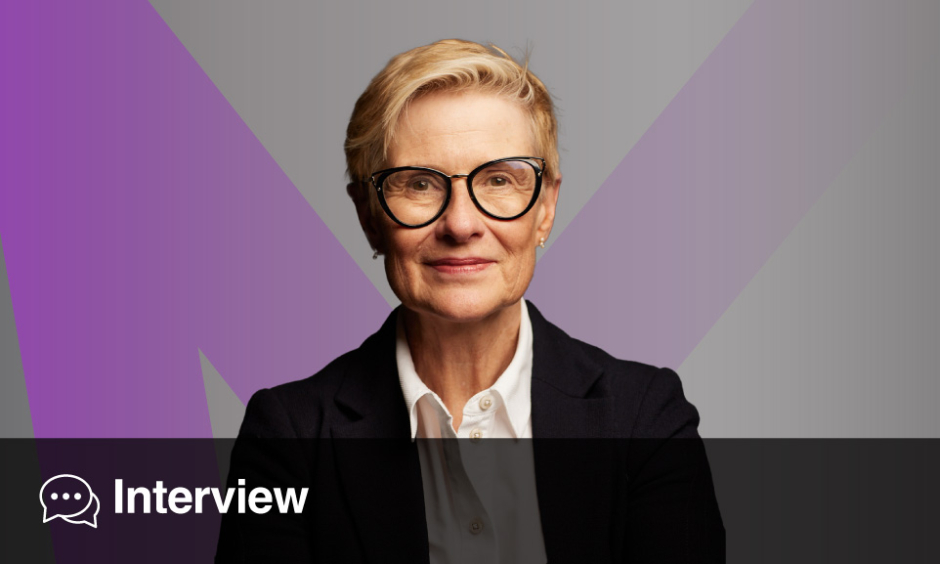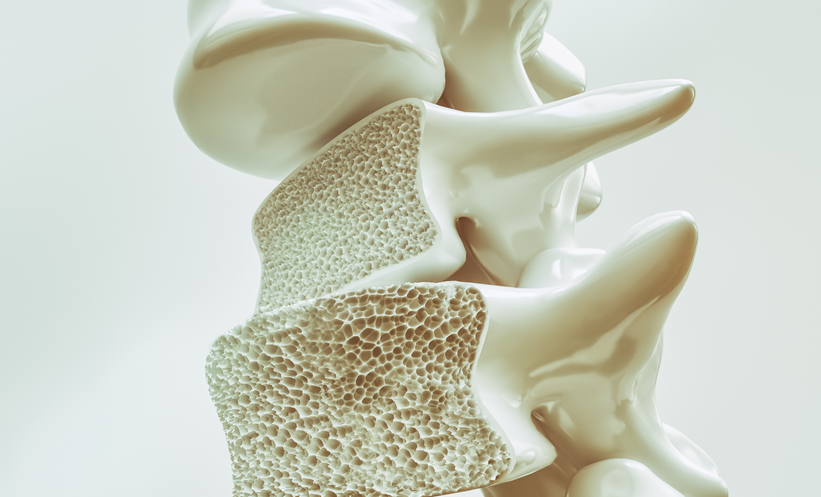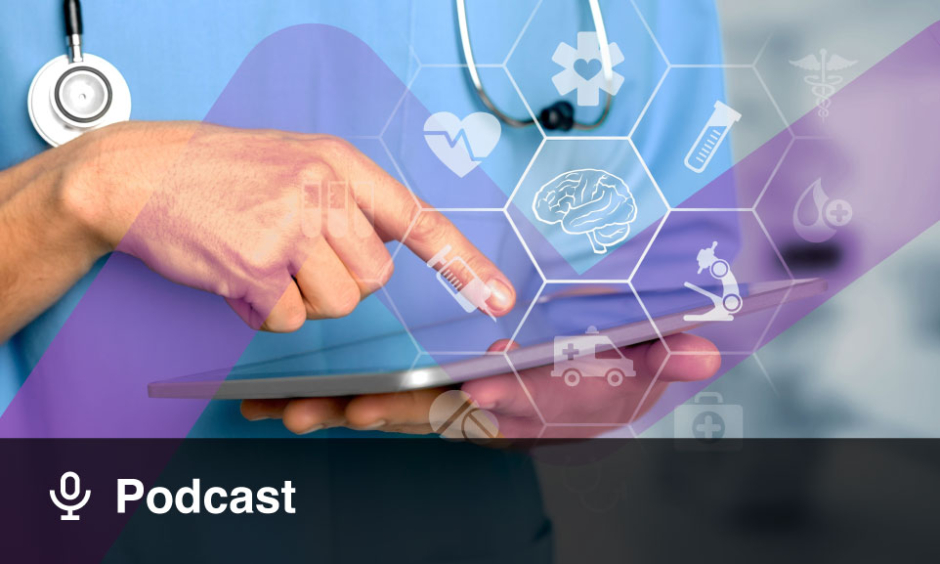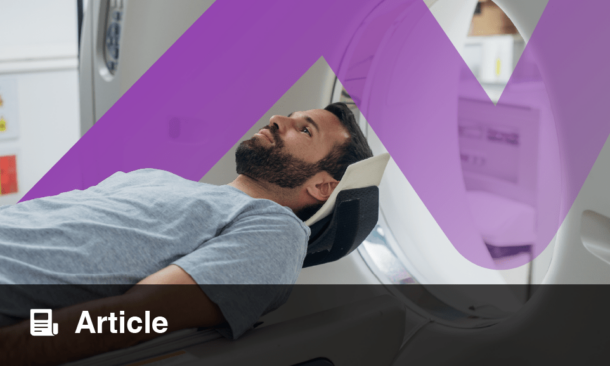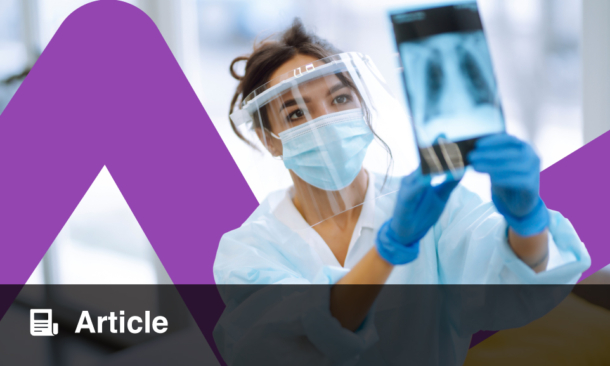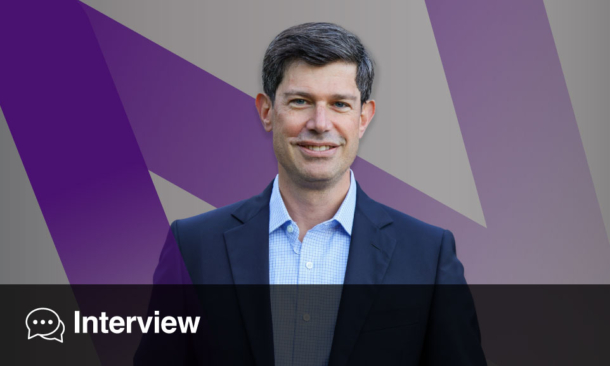Katharine Halliday | President of The Royal College of Radiologists (RCR); Clinical Director for Radiology, Nottingham University Hospitals, UK
Citation: EMJ Radiol. 2025; https://doi.org/10.33590/emjradiol/LLHJ2992.
![]()
What inspired you to specialise in paediatric radiology, and how has your career evolved since becoming a consultant in 1998?
Well, honestly, the reason I got a paediatric radiology job was because there was one going in a town where I wanted a job. I think it’s easy to find all areas of radiology really interesting, and there was a paediatric radiology job, and the people who worked in it were really nice. I thought, they were really nice colleagues that would be great to work with; and I never regretted it, we worked together for years.
The thing about paediatric radiology is you cover all different systems. You’ll be doing the musculoskeletal system, the gastrointestinal system, the respiratory system, you do all sorts of different things, and there are also opportunities to do intervention (I don’t do intervention, but there are opportunities). It’s great from that point of view. It’s also great in terms of interacting, because you do a lot of ultrasound scanning, and you’re doing it with the parents there. So, your communication skills are really important; you need to persuade children to get on the couch, and that’s not always easy, and the parents are obviously very anxious often about their children; you need to communicate with them all the time about what you’re finding and what it means. It’s got a lot of different aspects, and I must say that even now, after all these years as a radiologist, every week I come across things that I’ve never seen before, and it just keeps it really fresh. It’s great!
You have a special interest in the imaging of suspected physical abuse in children, which must be an often difficult subject to navigate. What are some of the unique challenges that come with this area of expertise?
Initially, I started doing more and more of it because I was quite intimidated by it, and I thought, well, this is quite a difficult area, so I better try and do as much as I can to get better at it. Then I discovered I started to attract it because I had taken that role. But it’s very tricky for the paediatricians, who have to be face to face with the parents and deal with the consequences of getting it wrong either way; either saying a child is being abused when in fact they’re not, or missing the fact that they’re being abused. The consequences either way are very serious for the child and the family. These are very big decisions that weigh very heavily on everybody involved. That’s one thing that is difficult.
Then, of course, there this dealing with the police, which can be quite intimidating. I mean, I have found that the police are always very professional and supportive, and they do a very difficult job. Goodness me, it’s so difficult. But I’ve really enjoyed working with the police, and, again, one of the good things about this role is you work with all sorts of different people. Then, there’s working with lawyers and going to court, which can be a real challenge because of the scheduling. It’s very difficult to schedule things with any accuracy because of all the things they deal with. They’re always trying to get you to keep 2 weeks free for a case, which of course, you can’t really do with a busy clinical job. Quite often, you’ll keep some time free and then be asked to go to court, and then they say, ‘Could you come back tomorrow?’ Appearing in court and giving evidence can also be quite intimidating, quite adversarial; and rightly so, your opinion is thoroughly dissected by the lawyers. It’s important that the right decision is reached. It’s also important that you express yourself in a way that is without jargon and that everybody in the court can understand, which are real skills.
The thing to remember is, it’s not about you. So, even though it may feel as if you are being attacked, it’s not that. It’s just that it’s important to understand whether they’re making the right decision. And overall, I think the process works pretty well.
Can you tell us more about your role in updating the guidance for imaging in cases of suspected physical abuse? What impact has this had on clinical practice?
Well, I was just the chair of the group that updated the guidance in 2018. We had real experts in that group, people from the paediatricians from the Royal College of Paediatrics and Child Health (RCPCH), and also radiologists, neuroradiologists from the RCR, and more; those were the real experts, the people who’d done the research. I just sort of drew them together, and we had great support from both of those Royal Colleges.
I think the thing was, before 2018, there was quite a lot of variation in the way people used to image children with physical abuse. There was quite a lot of confusion about what the right referral process was, who should have CTs of the head and who shouldn’t, which views you should do, etc. When we did the guidance, we brought together all these experts and all the evidence, and then we distilled it down into a simple step-by-step guide. That was really helpful for people, because previously, there was so much information, which was really confusing.
Now it is almost like a flow diagram: do this, do that, do the other. What that meant was that people started behaving in a more uniform fashion. Staff found it very supportive, because once you have something that’s really clear; as I say, it’s an area that people get really, really nervous about, so it is very reassuring for staff. Now that we have started imaging these children in a more uniform fashion, what that means is that we’re now able to get much more data to collect that in a more standardised fashion, and we’re able to say, well, looking back at this guidance, how much benefit is doing a CT head in everybody between 6 months and 1 year old? Amaka Offiah from the University of Sheffield, UK, who was on the original team, is putting all that together with her team, and will be then updating the guidance with the information from that. So, in many ways, it was really helpful.
How did your appointment as the National Clinical Lead for the Getting It Right First Time (GIRFT) programme for Radiology in 2017 shape your approach to improving radiology services across the UK?
It was such a privilege. It was really transformative for me. I went around 143 radiology departments, taking with me a data pack. The whole GIRFT team supported me; there was a data manager who helped get that data and a project manager, and then I was able to go to departments and say: ‘This is where you are on the national scale.’ It’s a marvellous process designed and created by Tim Briggs from the Royal National Orthopaedic Hospital, Middlesex, UK, and he really transformed surgical practice with it and then rolled it out to various other places. I was really lucky to be part of that process, and I think it showed huge variation across all areas of practice, but highlighted some major themes that came through about lack of staff, or poor IT, for example.
Also, the amount of time that staff were wasting trying to get new equipment, for instance, or doing business cases again and again, which isn’t actually within clinical staff skill set. These were common themes that came out and it confirmed my interest in service improvement and supporting people. If you have the right people in the room, from the executive level to all the people who work in the department, having that conversation around the data can be really supportive and transformative. It was a real privilege.
The Radiology GIRFT report was published in 2020. What were the most significant findings of the report, and were there any which surprised you?
I think workforce, and the fact that everybody was struggling. This was just before the pandemic, so everybody was struggling, and it showed us that we were on the brink, only just managing. Of course, the pandemic really pushed us over the edge then, and so we haven’t really been able to recover waiting times since the pandemic, because we were just at that point then.
As for surprising things, well, people are so innovative, staff are so innovative! You discover things that people were doing, and you just think, gosh, I can’t believe I’ve never thought of that. Things like natural sleep MRI, for instance. So normally, when you’re doing an MRI scan on a child, it takes ages and it’s quite noisy. If it’s a toddler, they can’t stay still, so you give them a general anaesthetic or sedation or something like that. But there were people across the countries, various little pockets of people, who thought, well actually, my toddler stays asleep pretty well if it’s a bedtime. So, they invented a process where they bring the children in at bedtime with a sort of travel cot, and their bottle or blanket, put them to sleep, put a couple of little headphones on, carry them onto the MRI scanner and do a 45 minute MRI with a child asleep. It’s so much better for them. I’ve been a paediatric radiologist for years, and I had never thought of that! In the first place I encountered it, it was one of the helpers who suggested this idea, and they’ve just gone with it and done it.
Now it’s quite common. Now, because of the GIRFT project, and because we were able to highlight it and spread that knowledge, it’s quite common. There are all sorts of examples of really good practice. People just thinking, ‘Oh yeah, I think I could make that better.’ One of the great things was being able to spread that. By the time you’ve been to a few people, when you are faced with a problem, you say, well over there they’re doing it this way, and that’s something that I’ve been able to continue through my career subsequently. The people I met were just amazing.
As former Clinical Director for Radiology at Nottingham University Hospitals since 2021, what strategic changes have you implemented to enhance patient care and department efficiency?
I stepped away from being Clinical Director when I became President of the RCR because I didn’t have time to do both. But it was great to be able to bring my GIRFT experience to that, to realise the things that you need to invest in are the staff. We instigated having one-to-ones with the radiologists, which is common practice in other organisations, but isn’t really that common in the NHS, to understand what people did, support them them, support training, and also advocate for better IT.
The estate that we had also wasn’t working for us and was causing delays for patients and real frustration for staff. The staff just want to look after patients properly, and if you put things in their way that prevent them from doing it, it’s just difficult. So, we started Big Estates project, which is still going on now. I really enjoyed it, again. I found it a real privilege.
What do you consider your proudest moment during your tenure as President of the RCR?
I mean, I am still so proud to have been elected. To have that faith put in you by your peers is an incredible feeling, and I’m determined to do my best not to let people down.
But also, I think the things that make me proud are when we make a difference. We’re able to stand up for the things that are important. We’ve become quite influential in the digital sphere, and we’re able to advocate for better digital and IT services, and also talk a lot about AI and what the potential advantages are and why we can’t push it further. At the RCR, we’re able to do that. We’re also able to highlight the issues around workforce. We have a national census across all four nations, which has a 100% response rate, so we get really good data on how many radiologists and oncologists we have and what their problems are. This allows us to really use that to advocate for them and to raise the profile of our specialities. We have done that, and so I’m very proud of all of that.
One of the most talked-about aspects of radiology nowadays is the role of AI. How do you believe AI will shape your own practice? What challenges do you think radiologists will have to overcome as AI becomes more commonly used?
It’s a very exciting time for radiologists. We are the natural leaders in this because most of most of the activity is happening in radiology. After all, we’re already digital and we’ve got loads of really great experts in radiology. AI is already being used in more than half of the departments in the country. Again, that’s data from our census, so it’s in there, but there is a considerable amount of attention being paid to it, and rightly so, because we do really need to harness the opportunities that digital and AI can bring.
However, there are real barriers to its implementation. Some of the things I’ve mentioned include digital infrastructure, lack of data standardisation, and poor interoperability between systems. At the moment, digital often actually slows the doctors down. You’ve got to open lots of different systems with lots of different passwords, and they don’t speak to each other. You quite often have to copy and paste, you’re quite often typing, and particularly for us of a slightly older generation, we’re quite slow typists. Voice recognition doesn’t work very well either, so on the whole, it slows us down.
But what we need to do is to be leading the change so that we can make sure that, instead of slowing us down, it enhances our work. Radiology is a popular specialty, we have about 10 to one people applying for each post, and one of the reasons is because of the innovation that’s involved. I think that really excites people.
Looking to the future, what are the key challenges and opportunities for radiology in the UK, and how do you envision the speciality evolving over the next decade?
The biggest challenge is the difference between the amount of workforce and the capacity. So, the biggest problem is lack of capacity and the demand for imaging continues to rise and continues to outstrip our workforce. We need to work differently, and we need to innovate. At the college, we’re embracing new ways of working. The staff are going to be absolutely key. It’s going to be about leadership, about pushing forward innovation, saying this is where innovation will help us, and this is where it won’t. I think our role will change. The traditional role of a radiologist is to be beavering away in a darkened room just producing reports, but our role will become much more consultative about leadership and patient pathways, innovation, that sort of thing. It doesn’t seem to be putting people off; people are very excited by it. At the RCR, we are working on giving people the tools they need to make that change.

